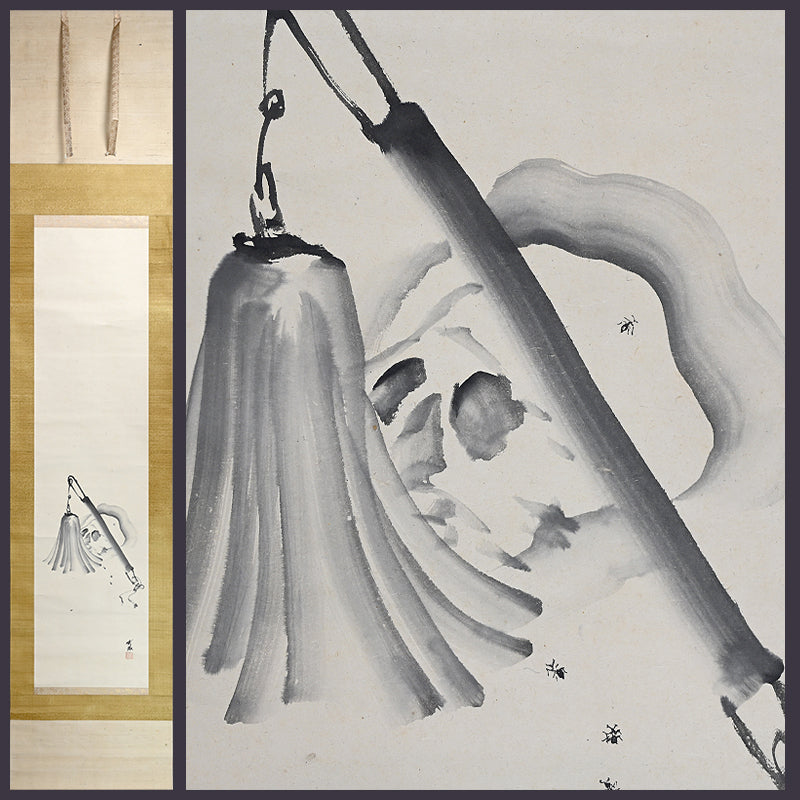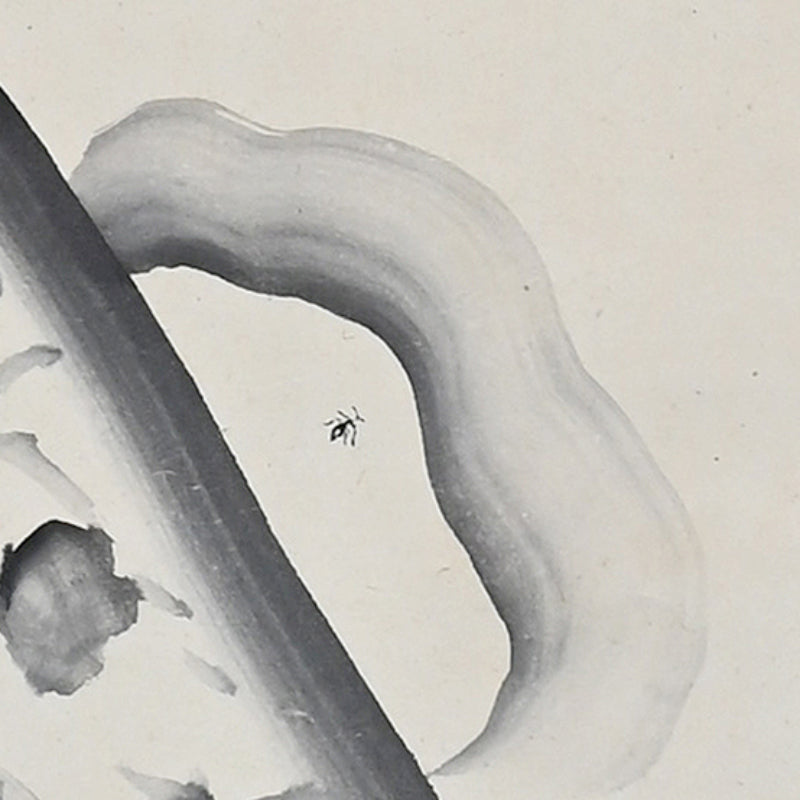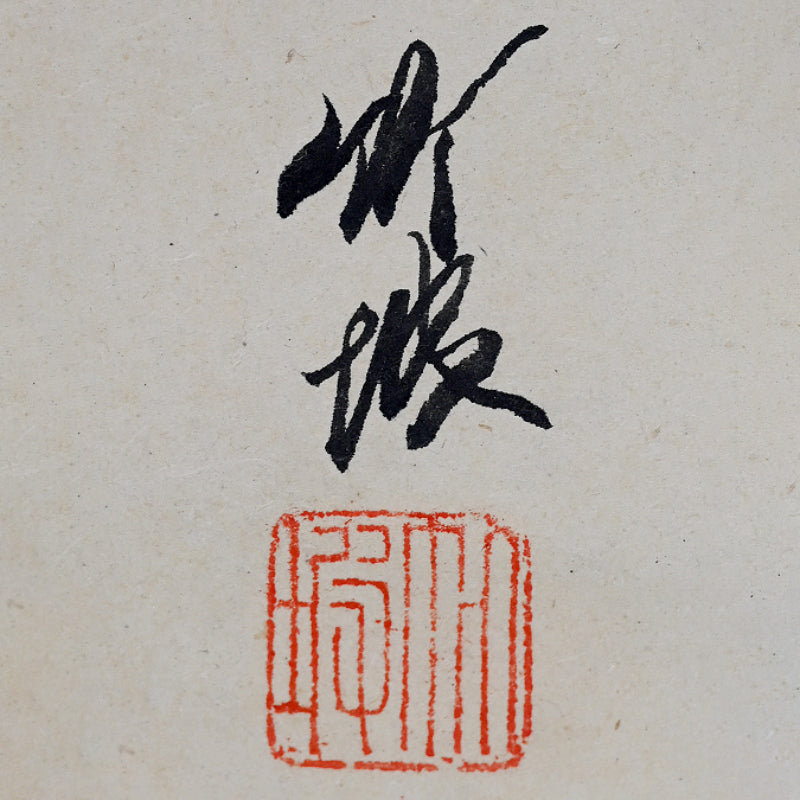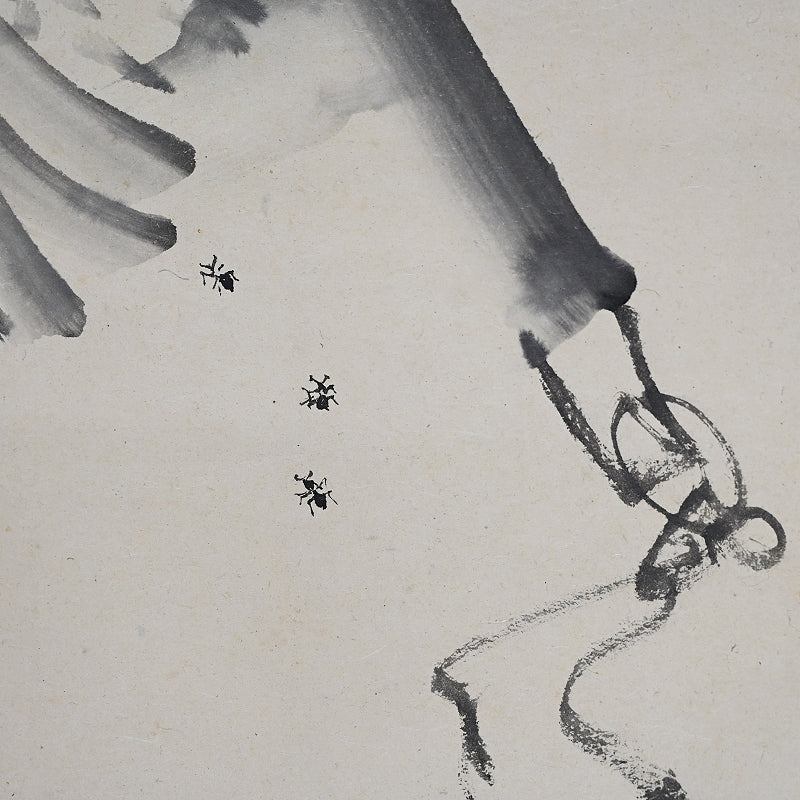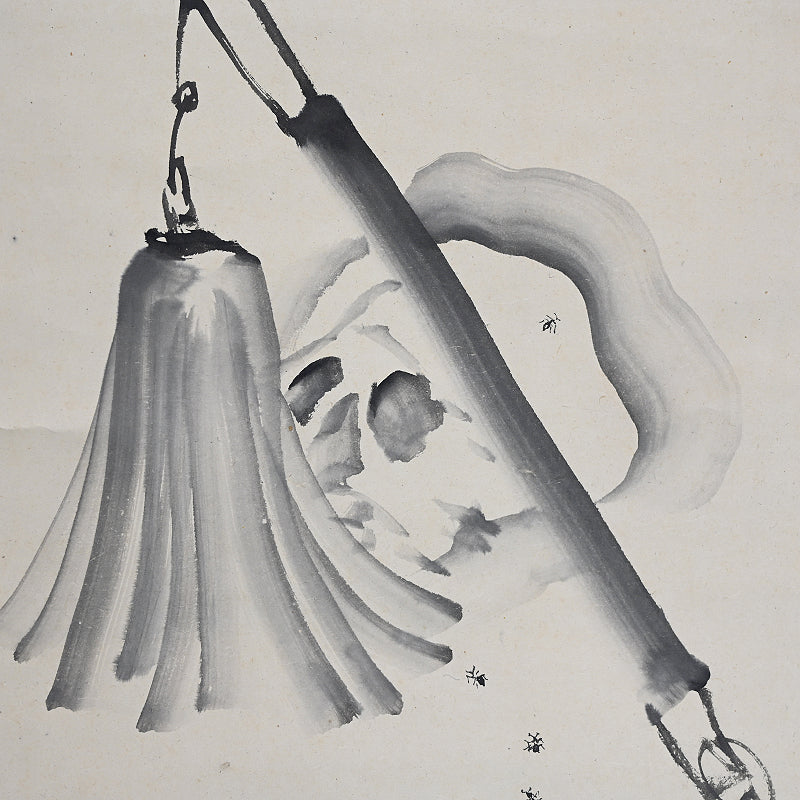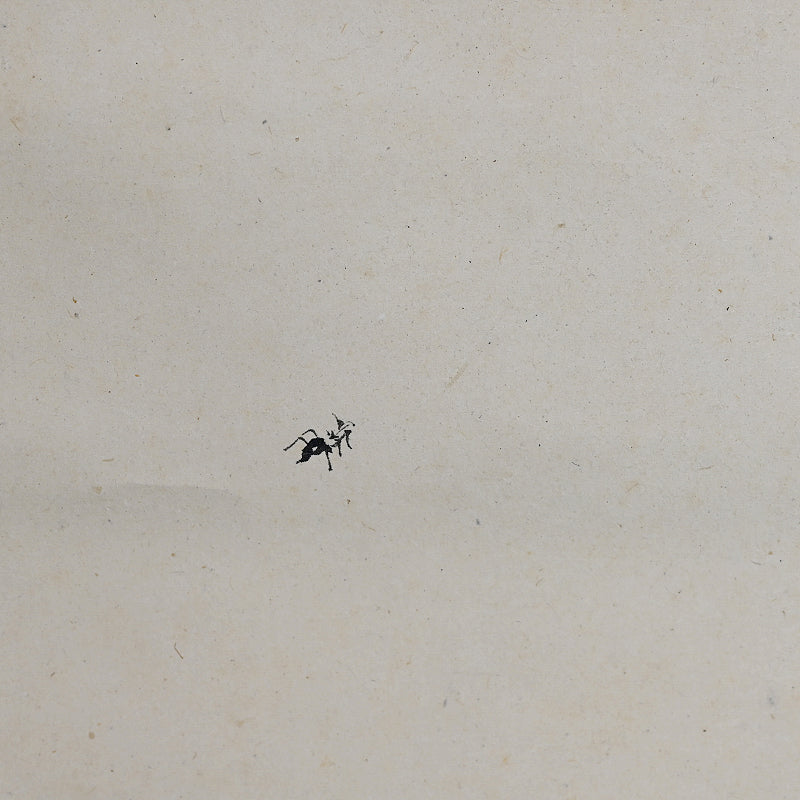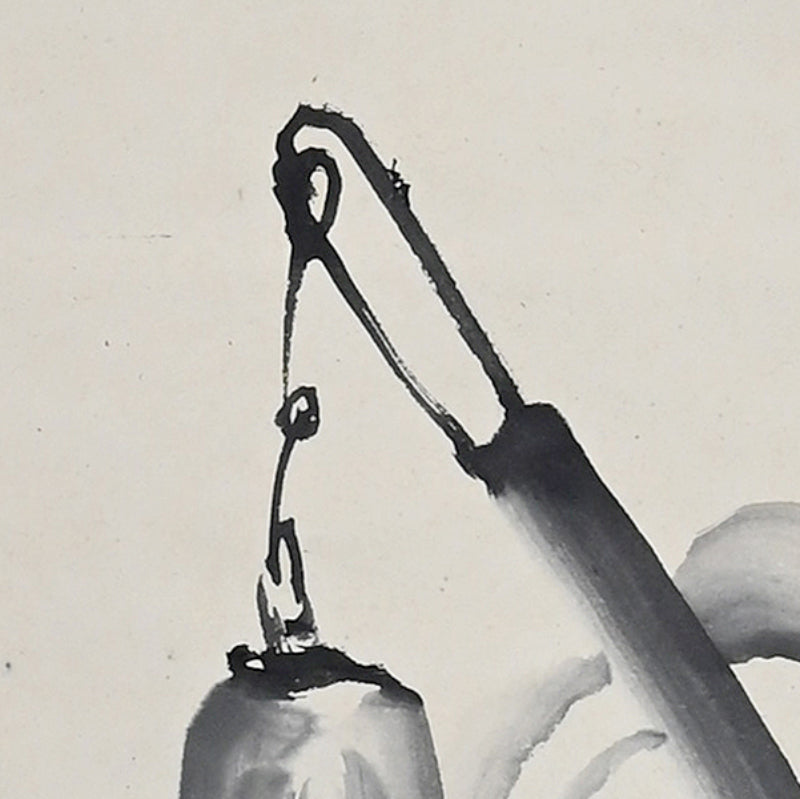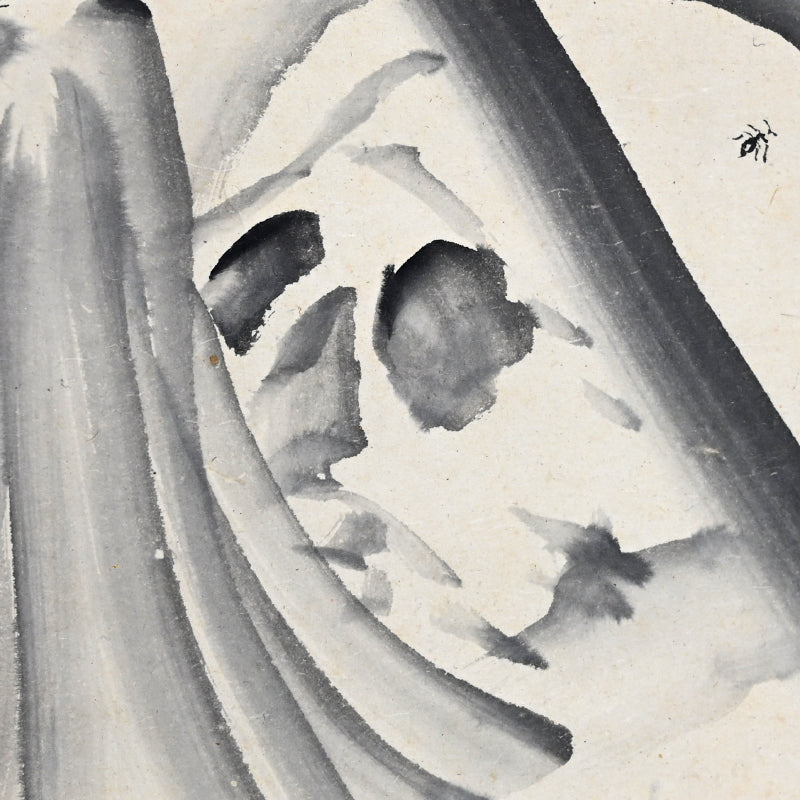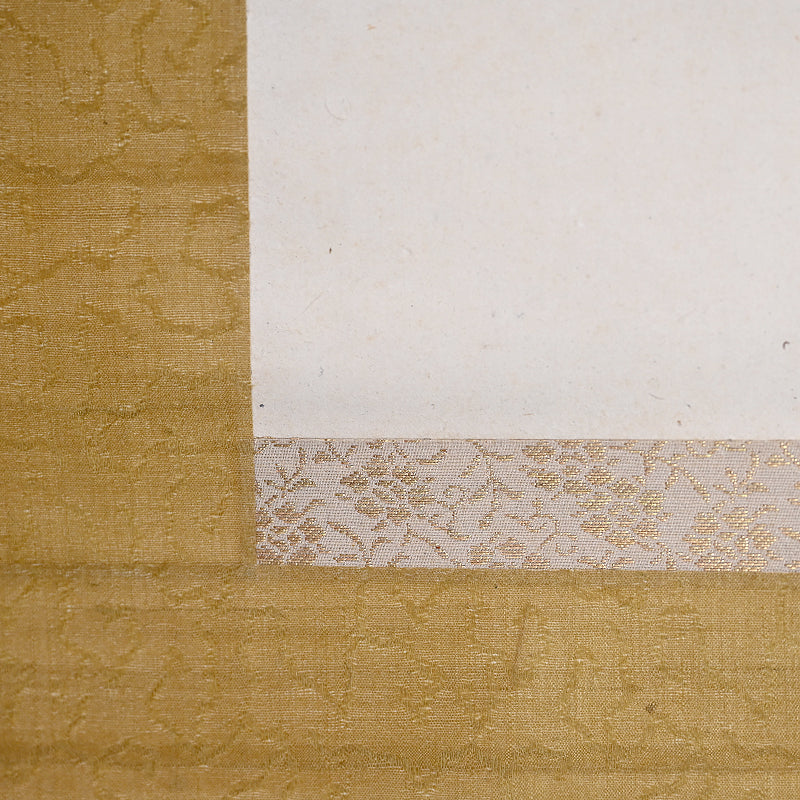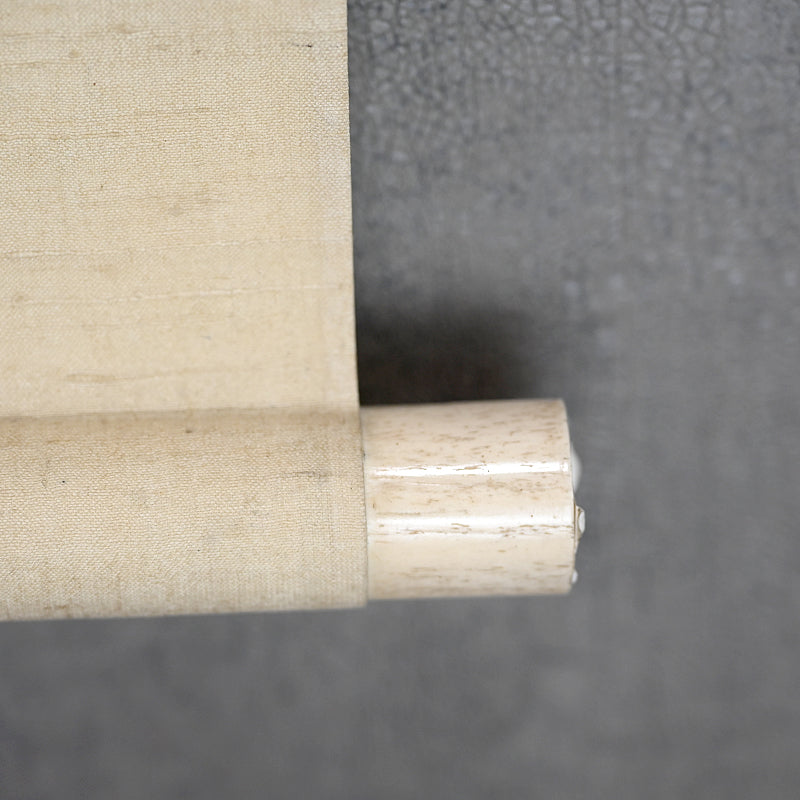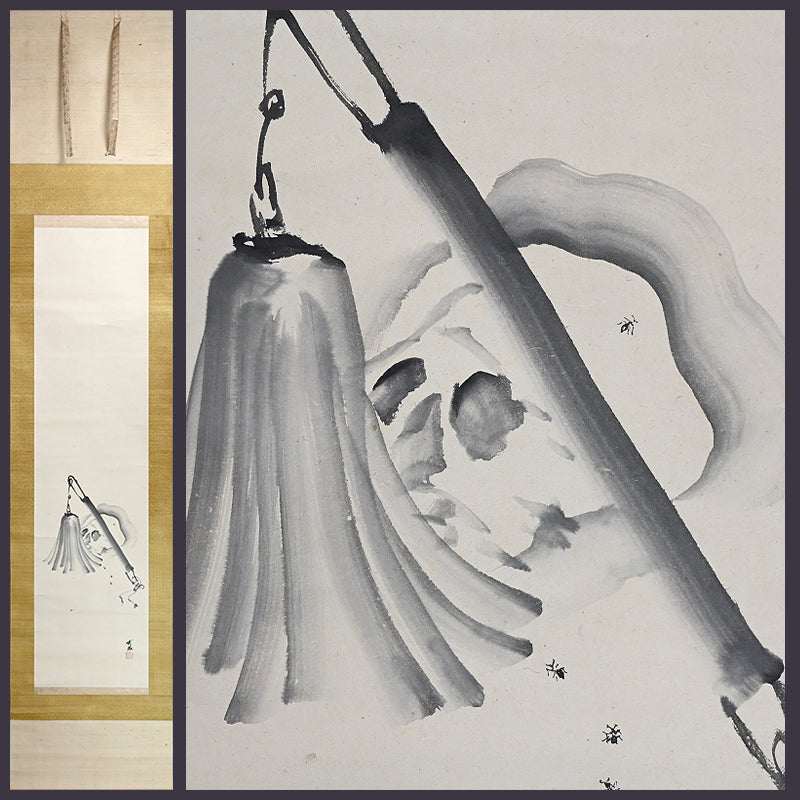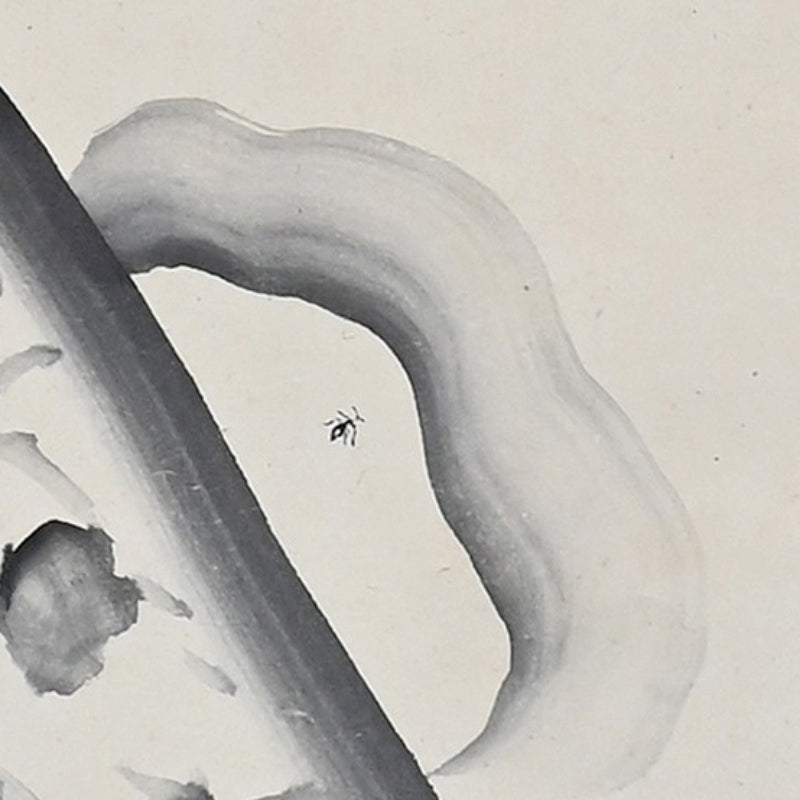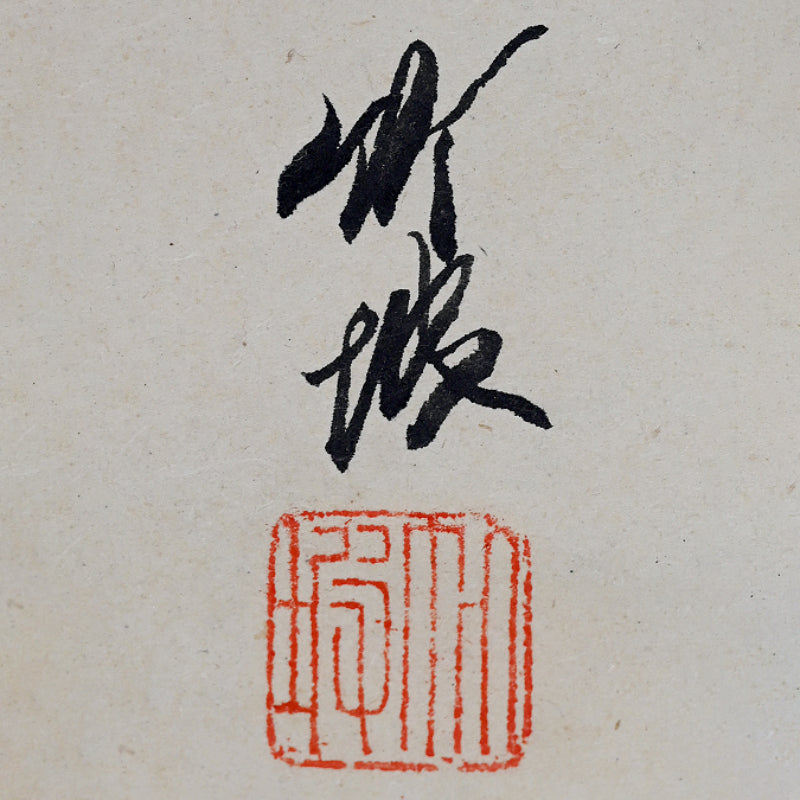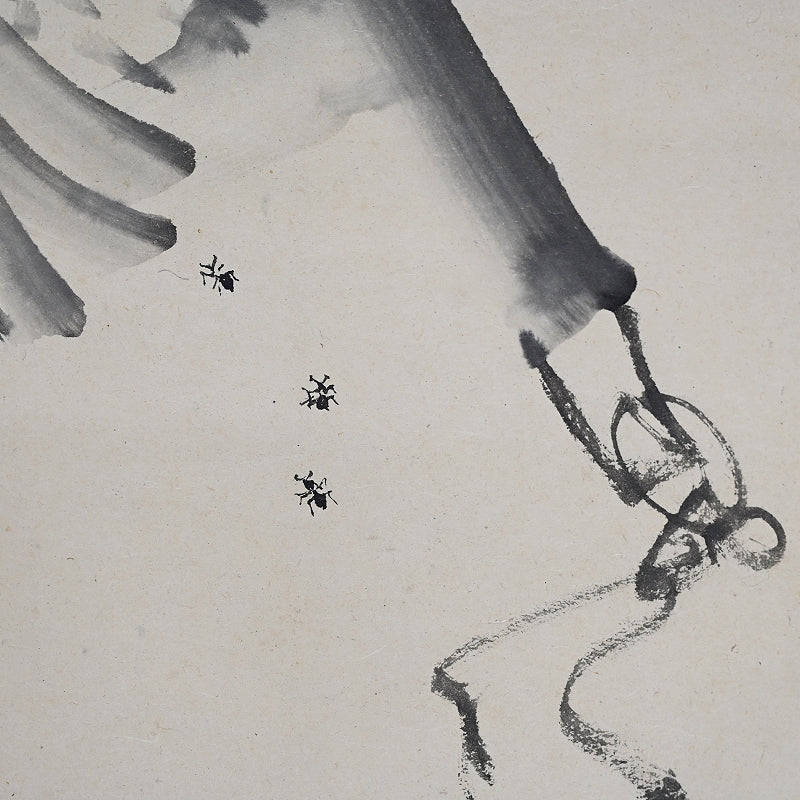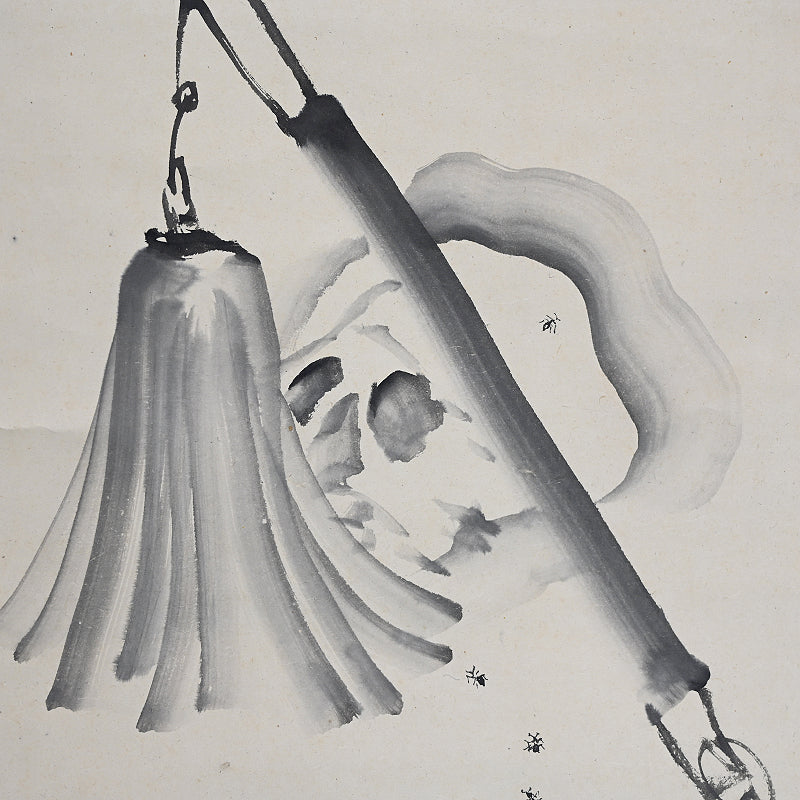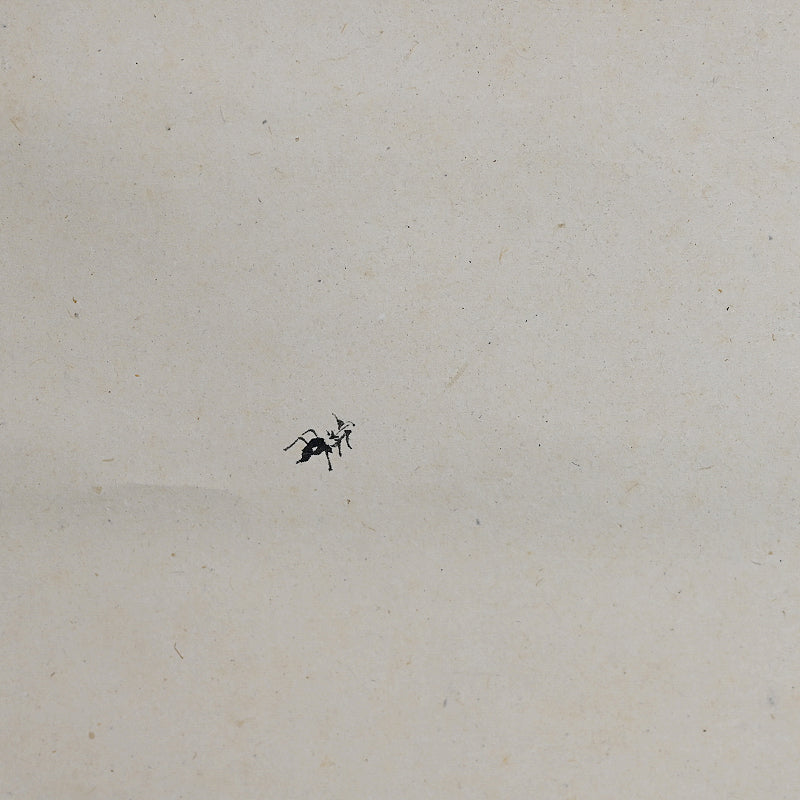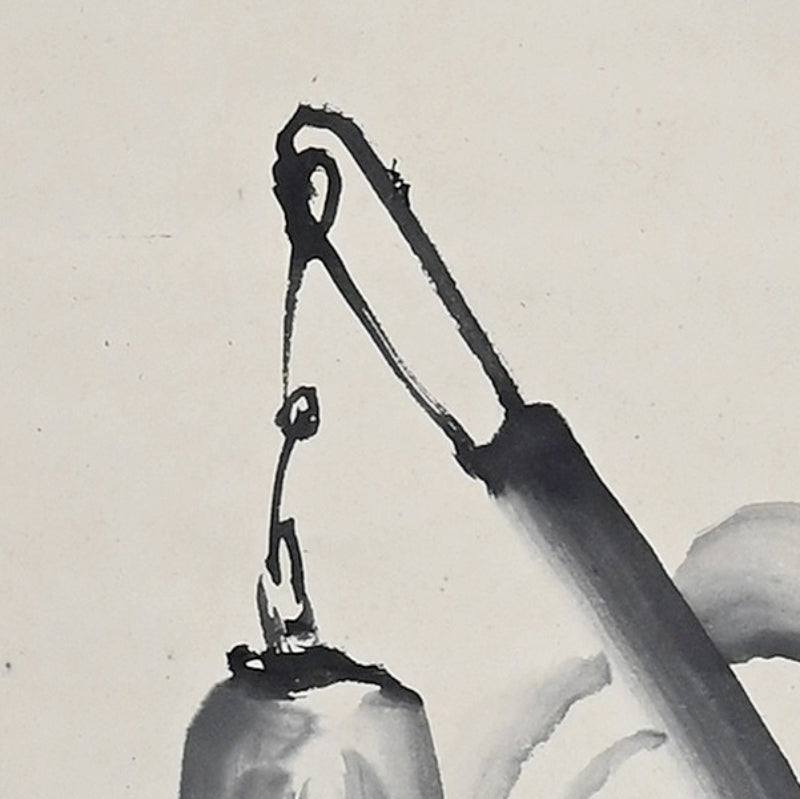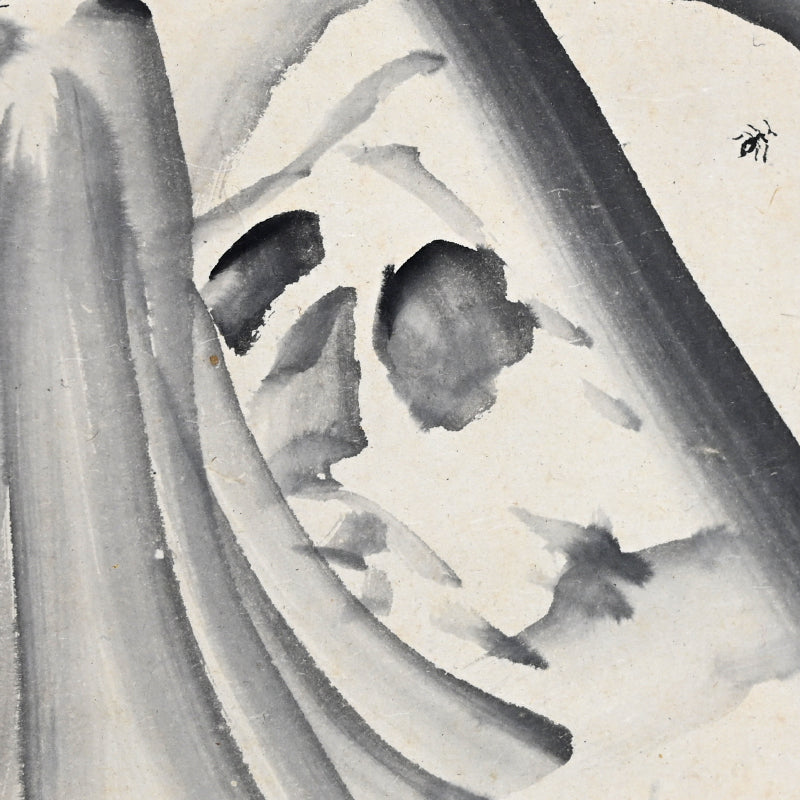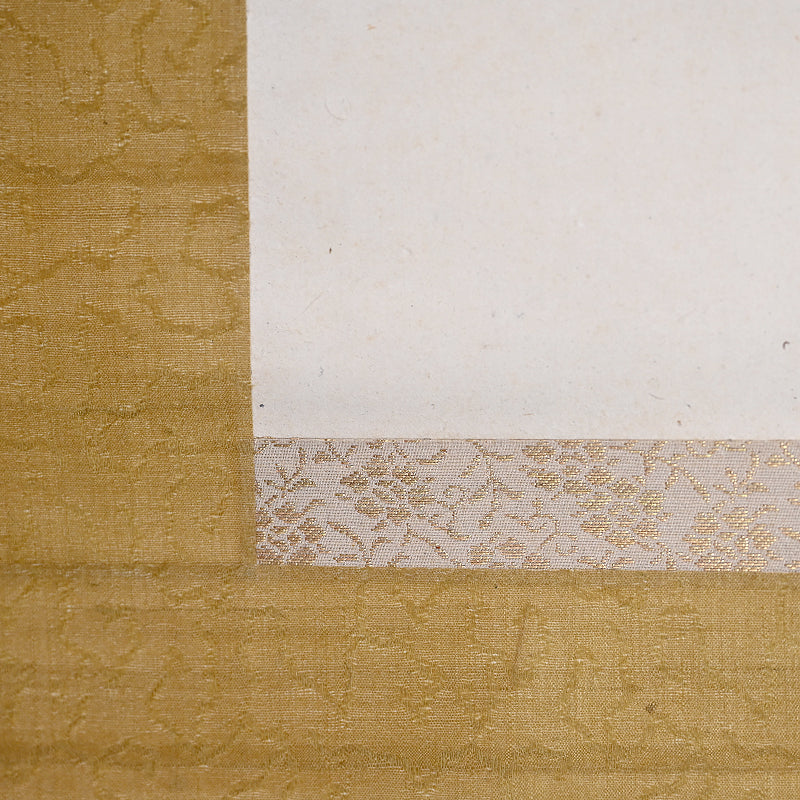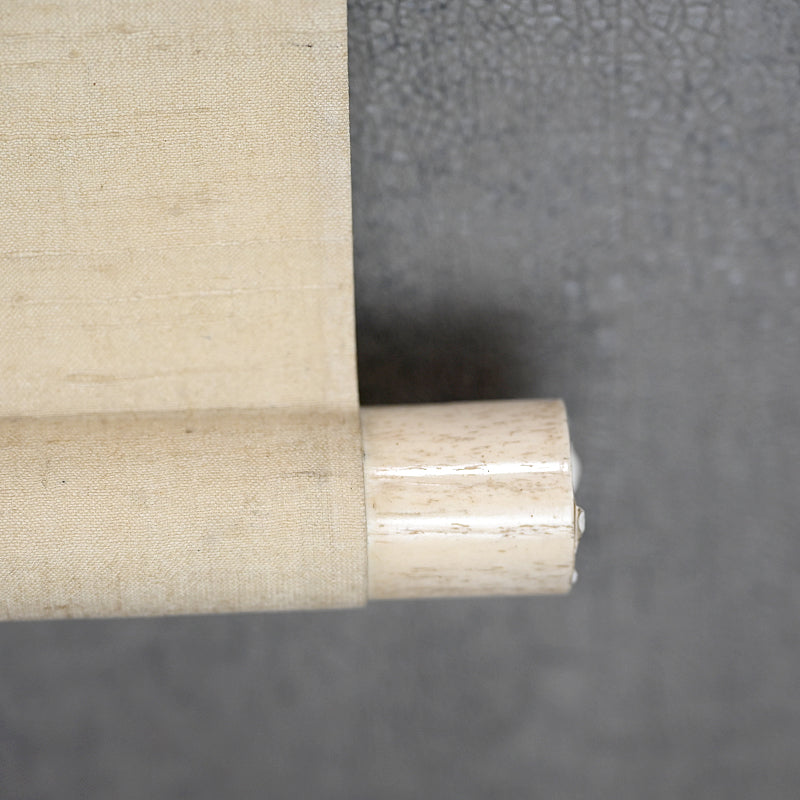Meiji p. Zen Skull Painting ー尾竹 竹坡
Meiji p. Zen Skull Painting ー尾竹 竹坡
Item Code: Z013
Couldn't load pickup availability
“Even saints come to nothing in the end” This phrase captions the image of ants crawling over a skull shrouded in a saihai signal wand used by warlords and saints on this expressive image by Otake Chikuha. Ink on paper in a rough tsumugi silk border with bone rollers, it is 43.2 x 209.5 cm (17 x 82-1/2 inches) and is in overall fine condition, enclosed in a wooden storage box.
Otake Chikuha (1878–1936) was born in Niigata, one of three brothers who would come to fame as great painters. Chikuha was a prodigious painter who began studying under Sasada Unseki at age four and gained recognition for his early bird-and-flower compositions. He later trained under Kawabata Gyokushō in Tokyo and emerged as a prominent artist of the Meiji and Taishō periods, known for his bold, dynamic style. He was accepted for the first Bunten in 1907, and continued to win accolades: his Mushroom Hunting (now lost) won third prize at the 1909 Bunten, Otozure (1910) and Mizu (1911) won second prize. Yet tensions with the academic “school style” and the brothers’ own uncompromising characters led to setbacks. In 1913 both were rejected from the Bunten, after which they staged a joint exhibition of the three Otake brothers. He became disillusioned with the art establishment, and at the same time, he sought renewal in his practice, presenting experimental works at the Tatsumi Painting Society and later associating with the Futurists. Toward the late Taishō era he helped found the avant-garde group Yakkakai, contributing the majority of works—59 of 79—in its first exhibition, signaling his determination to reinvent himself. Yet the group dissolved after its third show, and later unjuried entries at the Teiten failed to make impact. In his final years, Chikuha produced large-scale decorative works for the Meguro Gajoen, where much of his artistry remains visible today. His career reflects both the exuberance of early modern Japanese painting and the trials of navigating its evolving art institutions.
Share
